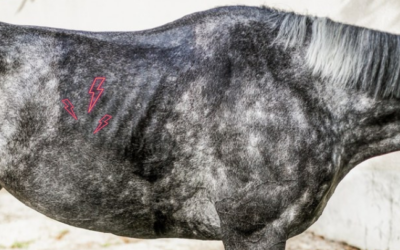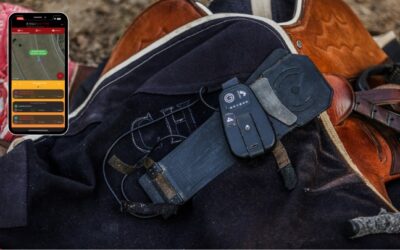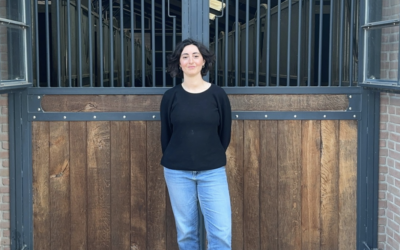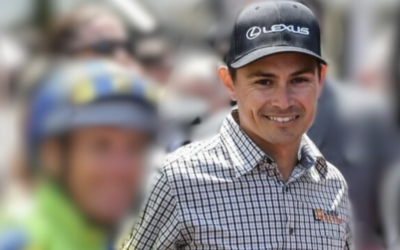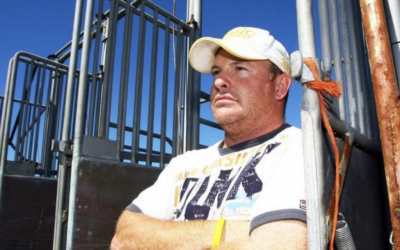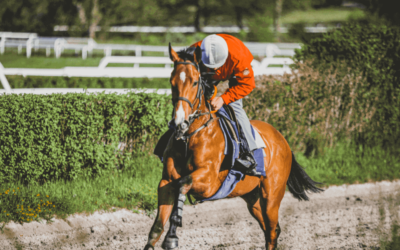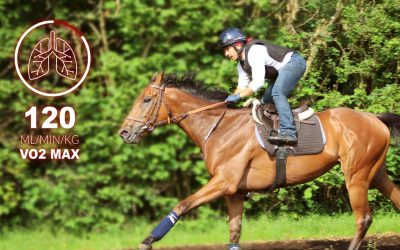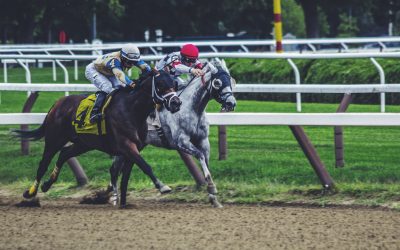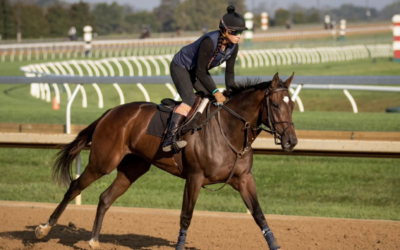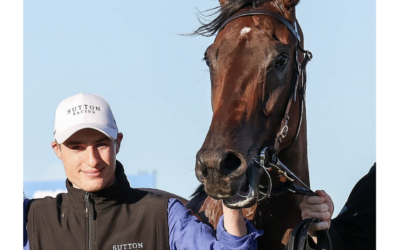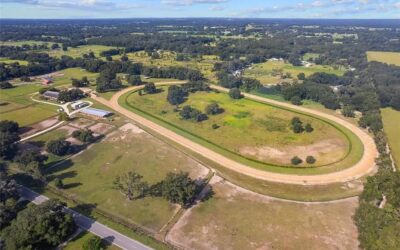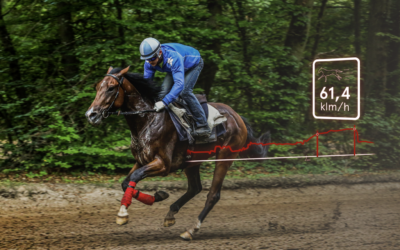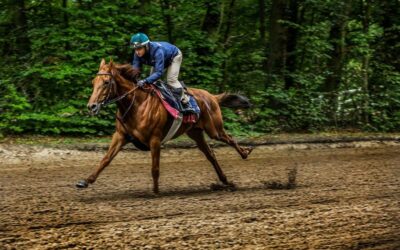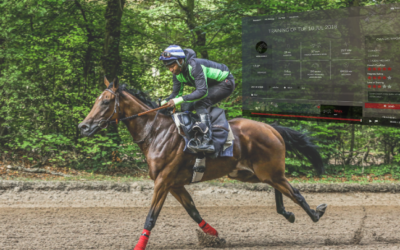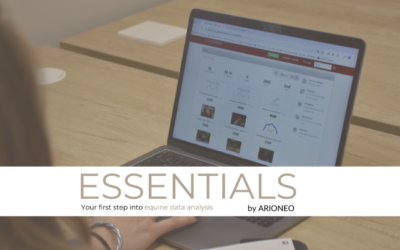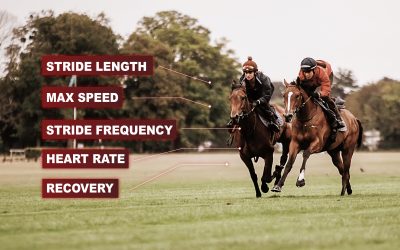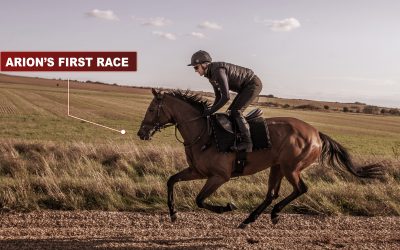EXPLORE OUR BLOG
Here you will find a lot of information to better understand performance and health measurements as well as tips about racehorse training and well-being.
LATEST ARTICLES
Gastric ulcers in racehorses: impact on performance
Gastric ulcers are the most common gastric pathology in horses and can develop for a variety of reasons, depending on which part of the stomach is affected.
EQUIMETRE 2.0: Revolutionize your training with real-time tracking
With the recent release of Equimetre 2.0, our sensors have taken technology to a new level, offering real-time tracking functionality.
Giordana Girini, integrating the Advanced program into her vision of a future data analyst
Giordana, an equine science and osteopathy enthusiast, tells us about her journey, her experience with the Advanced program, and how she integrates data into her daily life.
How Jarrad Cook, data analyst at Kris Lees Racing improved his data knowledge with the Advanced program
Jarrad Cook, data analyst at Kris Lees Racing in Australia, shares his experience of the Advanced program and how he uses the Equimetre in his daily work.
Laura Fitzharris: how does the Advanced program integrate her veterinary practice?
Laura tells us how the Advanced program has enriched her veterinary practice and enabled her to integrate data into the monitoring of athlete horses.
Equine technology: Better understand your horses with Arioneo data, Darryl Ward’s EQUIMETRE experience
In this interview, find out how Deagon trainer Darryl Ward has integrated equine technology into his training with EQUIMETRE.
BROWSE AMONG OUR CATEGORIES
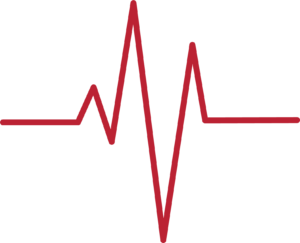
Equine Physiology

Testimonials
Racehorse training
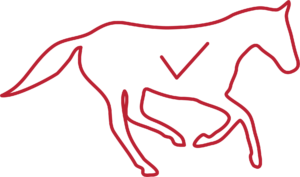
Young racehorses
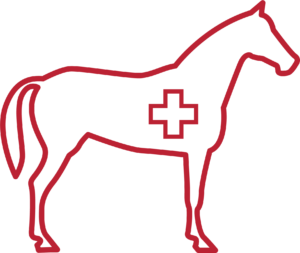
Health & Science
Standardbreds
EQUINE PHYSIOLOGY
How to prevent myositis in horses thanks to data?
In this article, we share the story of Arion, whose training data analysis helped prevent myositis.
Exertional rhabdomyolysis in horses
Exertional rhabdomyolysis in horses, also known as tying-up, Monday disease or myositis, is defined as a painful muscle disease induced by exercise.
Muscular physiology in the athletic horse
Muscular physiology in the horse athlete is an important factor to study when interested in his training. Indeed, the muscles participate in various functions essential to the horse’s life (breathing, digestion…) and to its adaptation to the surrounding environment. The muscles are part of the different components that contribute to the performance of the horse athlete as they fulfill locomotion purposes: a horse that is ideally muscled will have a better chance of winning a race.
4 questions to analyze your racehorses’ fitness
With four questions frequently asked by trainers, this article presents the essential parameters to collect in order to evaluate your horses’ fitness easily.
4 reasons to analyze VO2Max in racehorse training
VO2Max is a key paramater to measure the intensity of a horse’s effort. It can be used to establish a race strategy, calculate the intensity of a training or to follow a racehorse’s performances over time.
V200 and V4 | Understanding the heart rate zones of the racehorse
RACEHORSE TRAINING MONITORING
Lexington trainer: Kara Lin Toye’s Equimetre experience.
The Keeneland meet is always a good opportunity to meet and greet our Equimetre users based in Kentucky, including Kara Lin Toye.
She told us about her experience with Equimetre and how she integrates it into her daily work with horses.
From Flemington to Ballarat: Dom Sutton’s Equimetre experience
Our representatives from Arioneo in Australia had the opportunity to speak with Dom Sutton at his stables in Ballarat about his experience with and use of Equimetre. As young startup stable, transitioning from Flemington to Ballarat, data has been a strong asset in the team organization.
Citra Oaks Farm (Brad & Debbie Donaldson): One of the first farms to offer Equimetre services in Florida
Debbie and Brad Donaldson’s passion for animals, and especially horses, is evident from
the first seconds of a conversation with them.
Navigating your data provider transition seamlessly: 5-Step guide
In the dynamic world of equine performance analytics, choosing the right data provider is crucial for maximizing your horses’ potential. If you’re considering a transition or seeking alternatives, Equimetre is here to ensure a seamless switch, enhancing your training outcomes without skipping a beat.
Heart murmur and performance: are they compatible?
The cardiovascular system can be compared to a huge orchestra, and the presence of any structural defect can alter the functioning of the system and throw the orchestra out of harmony. A heart murmur is added to the initially audible heartbeat and becomes a false note in the orchestra, requiring the trainer to intervene on several levels.
Racing Management: how to include data in your entry strategy in 5 easy steps
Data can help backing up your feeling but also guiding logical and rigorous decisions. Here are 5 steps that you can incorporate to your entry strategy.
EQUINE HEALTH & SCIENCE
8 reasons to do the Essentials program
Data is revolutionising equestrian sports and racing. the Essentials training is the ideal introduction for trainers, riders and equine science enthusiasts.
How the Advanced program helped Nick Pinkerton with equine performance and analysis
In this interview, Nick Pinkerton reflects on his career, his involvement in the Advanced program, and his ambitions to revolutionize equine performance analysis through data science.
Gastric ulcers in racehorses: impact on performance
Gastric ulcers are the most common gastric pathology in horses and can develop for a variety of reasons, depending on which part of the stomach is affected.
YOUNG RACEHORSES MONITORING
Debutant horses : how to prepare their first race ?
Debutant horses symbolise the future champions of horse racing. How can data science assist you in making the most of their first racing experience?
4 elements to objectivize when training young horses
The arrival of the two-year-olds in the stables is always an exciting and dreamy time for racehorse trainers. Training a two-year-old is the opportunity to detect within his stable a future crack capable of running and winning group races. Discover in this article 4 elements to be objectified during the training of the newly arrived two-year-olds in the stable.
Monitoring 2 years old horses training thanks to data
Every winter trainers welcome a new generation of athletes to their stables. Find out about the data they need to analyze during their training sessions.
STANDARDBREDS TRAINING
No Results Found
The page you requested could not be found. Try refining your search, or use the navigation above to locate the post.
TESTIMONIALS
How the Advanced program helped Nick Pinkerton with equine performance and analysis
In this interview, Nick Pinkerton reflects on his career, his involvement in the Advanced program, and his ambitions to revolutionize equine performance analysis through data science.
In Chantilly, Tim Donworth talks about the EQUIMETRE innovation serving equine performance
Tim Donworth, a young Irish trainer based in Chantilly for nearly three years, shares his experience and modern vision of racehorse training with EQUIMETRE.
Giordana Girini, integrating the Advanced program into her vision of a future data analyst
Giordana, an equine science and osteopathy enthusiast, tells us about her journey, her experience with the Advanced program, and how she integrates data into her daily life.

